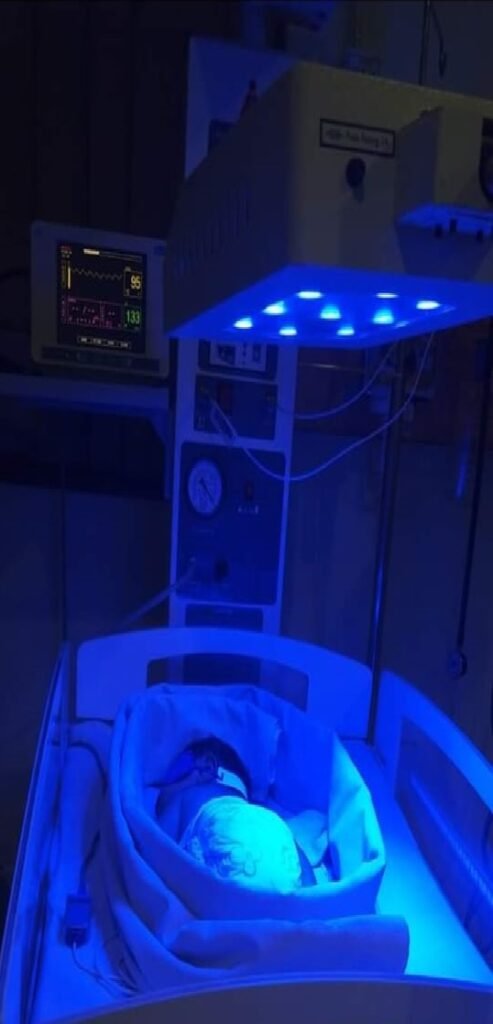NEWBORN JAUNDICE: WHAT YOU SHOULD KNOW!

Newborn jaundice is the most common condition in newborn and harmless if detected well in time and managed.It occurs when a baby has a high level of bilirubin in the blood.
Bilirubin is a yellow substance that the body creates when it replaces old red blood cells. The liver helps break down the substance so it can be removed from the body in the stool.
A high level of bilirubin makes a baby’s skin and whites of the eyes look yellow. This is called jaundice.
Most newborns have some yellowing of the skin, or jaundice. This is called physiological jaundice.
Two types of jaundice may occur in newborns who are breastfed. Both types are usually harmless.
Breastfeeding jaundice is seen in breastfed babies during the first week of life. It is more likely to occur when babies do not nurse well or the mother’s milk is slow to come in.
Breast milk jaundice may appear in some healthy, breastfed babies after day 7 of life. It is likely to peak during weeks 2 and 3, but may last at low levels for a month or more. The problem may be due to how substances in the breast milk affect the breakdown of bilirubin in the liver. Breast milk jaundice is different than breastfeeding jaundice.
Severe newborn jaundice may occur if the baby has a condition that increases the number of red blood cells that need to be replaced in the body, such as:
1.Abnormal blood cell shapes (such as sickle cell anemia)
2.Blood type mismatch between the mother and baby (Rh incompatibility)
3.Bleeding underneath the scalp (cephalohematoma) caused by a difficult delivery
4.Higher levels of red blood cells, which is more common in small-for-gestational age (SGA) babies and some twins
5.Infection
6.Lack of certain important proteins, called enzymes e.g G6PD
Things that make it harder for the baby’s body to remove bilirubin may also lead to more severe jaundice, including:
1.Certain medicines
2.Infections present at birth, such as rubella, syphilis, and others
3.Diseases that affect the liver or biliary tract, such as cystic fibrosis or hepatitis
4.Low oxygen level (hypoxia)
5.Infections (sepsis)
6.Many different genetic or inherited disorders
7.Babies who are born too early (premature) are more likely to develop jaundice than full-term babies.
TREATMENT
1.PHOTOTHERAPY …primary treatment in unconjugated jaundice along with proper breastfeeding sessions
2.Exchange transfusion
3.I.V Immunoglobulin
Mayom hospital NICU/NSY has the most advanced LED phototherapy units to manage these babies with trained nursing staff and setup.
#DrDeepaAggarwal #BestPediatrician #mayomhospital #newbornjaundice #phototherapy
